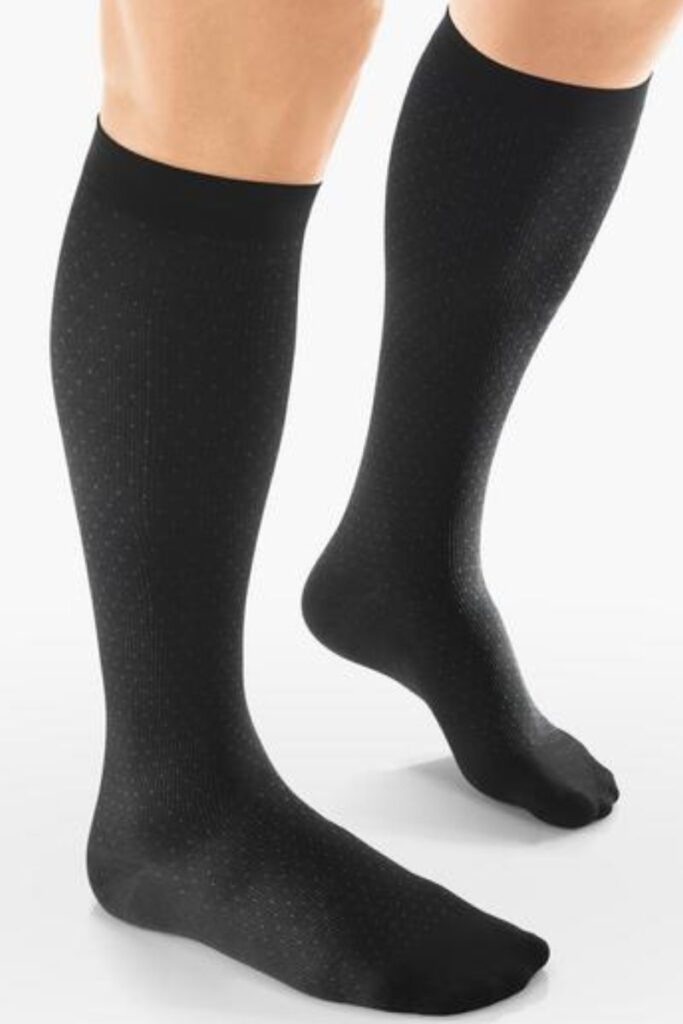What are Compression Socks
Compression socks are designed to apply gentle pressure to your legs and feet. This helps to promote better blood flow, prevent swelling, and reduce the risk of blood clots.
Compression socks are more than just a trend they are effective solution for enhancing circulation, reducing swelling. Compression socks are commonly used for medical purposes but have also become popular for everyday use during travel. By increasing circulation, compression socks help with discomfort in the legs and feet

How Do Compression Socks Work?
Compression socks are designed to provide controlled pressure on your legs. The main goal of this pressure is to enhance circulation.
Increased Blood Flow: The socks help to push blood back towards the heart. This is particularly useful for people who sit or stand for long periods of time.
Reduced Swelling: By improving circulation, compression socks reduce fluid retention, which is a major cause of swelling in the legs, ankles, and feet.
Pain Relief: Compression socks can also alleviate pain caused by conditions like varicose veins, deep vein thrombosis (DVT), or other circulation problems.
Faster Recovery: Athletes often wear compression socks to improve recovery after intense training or competition. The socks help reduce muscle soreness and fatigue, allowing for quicker recovery and better performance.
Comfort During Travel: Long trips, especially flights, can cause your legs to become swollen and uncomfortable. Wearing compression socks during travel helps alleviate these issues, keeping your legs comfortable throughout the journey.
Types of Compression Socks
Compression socks come in different styles, materials, and levels of compression. Here are some common types:
Medical Compression Socks: These socks are specifically designed to address medical conditions such as varicose veins, swelling, and deep vein thrombosis. Medical Compression Socks apply higher levels of pressure and are usually recommended by doctors. The most common compression range for medical use is 20–30 mmHg.
Sports Compression Socks: Athletes often use sports compression socks to improve performance and recover faster after intense physical activity. These socks are typically designed to help with muscle recovery, reduce swelling, and improve blood circulation during exercise. Compression socks for sports often come in a variety of lengths and are made from breathable fabric to keep your legs cool and dry
Travel Compression Socks: Traveling, especially long flights, can lead to swelling and discomfort in your legs and feet. Travel compression socks are designed to improve circulation during long periods of sitting, preventing swelling and the risk of blood clots. They are lightweight, comfortable, and come in various styles, including ankle and knee-high options
Everyday Compression Socks: Compression socks for daily use are designed for people who spend a lot of time sitting or standing, such as office workers, teachers, or those with a sedentary lifestyle. These socks are comfortable, easy to wear, and help maintain good circulation throughout the day.
FAQS
Q: How do compression socks work?
They provide graduated pressure, with tighter compression at the ankle, helping blood flow back to the heart and reducing swelling.
Q: Who should wear compression socks?
Anyone who spends long periods sitting or standing, athletes, travelers, and people with medical conditions like varicose veins can benefit from compression socks.
Q: Can I wear compression socks all day?
Yes, you can wear them for several hours a day, but it’s best to consult a doctor if you’re using them for medical reasons.
Q: Are compression socks comfortable?
Compression socks are designed for comfort, with materials that wick moisture and keep your legs feeling fresh and supported.
Q: Can I wear compression socks while sleeping?
Generally, it is not necessary to wear compression socks while sleeping unless recommended by a doctor for medical purposes.
